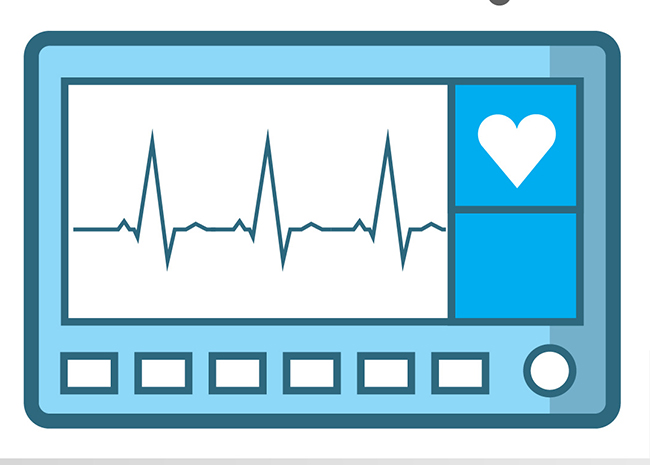Incidence of Severe Cardiovascular Conditions Fuels Cardiac Arrhythmia Monitoring Devices Industry

Cardiac arrhythmia monitoring devices, as with many other kinds of health tech products, are gaining traction with consistent rise in disease awareness. Heart diseases have long been considered among the leading causes of death worldwide. The American Heart Association estimates that nearly 18.6 million died from cardiovascular disease across the globe in 2019, indicating a 17.1% increase over the past decade.
Patients suffering from cardiovascular diseases are at risk of numerous ailments from stroke, coronary heart disease and arrhythmia, among others. More than 33 million people across the world suffer from atrial fibrillation, a common type of arrhythmia. Arrhythmias, which refer to conditions related to heart rhythms such as bradycardia and tachycardia can lead to sudden heart failure and therefore require consistent monitoring.
As the risk of these severe cardiovascular conditions continue to rise, particularly in the fraught conditions created by the ongoing COVID-19 pandemic, cardiac rhythm monitoring devices are likely to gain significant popularity over the coming years. A recent report about the market suggests that the cardiac arrhythmia monitoring devices market will exceed $9 billion valuation by 2026.
Prevalence of Arrhythmias Among COVID-19 Patients
The recent outbreak of the COVID-19 disease caused by the novel coronavirus rapidly escalated into a global pandemic in March 2020. While the symptoms most commonly associated with the diseases are respiratory system-related, recent studies have revealed that cardiovascular complications are also a common occurrence among COVID-19 patients.
Cardiac arrhythmias are among the most prominent of these cardiac manifestations. In early reports from China, where the disease originated, more than 17% arrhythmia prevalence was observed in hospitalized COVID-19 patients. Also, a higher, nearly 44% incidence rate of arrhythmia was observed in patients admitted to the ICU.
Given the risk of arrhythmias among COVID-19 patients, especially atrial fibrillation, the demand for viable cardiac monitoring devices has witnessed a notable surge. Since the onset of the pandemic, healthcare systems worldwide have started to make a transition to virtual health, by integrating remote monitoring solutions, wearables and other advanced technologies to curb the risk of virus exposure. In the United States alone, telehealth adoption registered a sharp incline from 11% in 2019 to 46% in 2020.
In essence, the pandemic has ushered in a novel era of cardiac health management, with remote patient monitoring at its forefront. In this scenario, a new generation of wearable cardiac rhythm monitoring devices is rapidly emerging, in a time when it is most needed.
Key players in the cardiac arrhythmia monitoring devices industry are thus making targeted efforts to address the growing need for advanced medical devices, by developing innovative and sophisticated monitoring solutions for heart rhythm problems among COVID-19 patients.
To cite an instance, in April 2020, Coala Life announced an expansion of its remote monitoring capabilities, designed to monitor COVID-19 patients at home, as a part of the FDA’s new emergency guidance to tackle the coronavirus. The Coala Heart Monitor, a smartphone-powered ECG device, is able to identify nine common cardiac arrhythmias and normal sinus rhythm.
Likewise, RhythMedix, a medical device manufacturer introduced a next-gen wearable cardiac telemetry monitor in February 2021, equipped with in-built 4G connectivity for accurate detection of arrhythmias. The new device, dubbed RhythmStar, can be worn discreetly for extended remote monitoring, sans the need for additional phones or communication devices. The technology enables rapid analysis of ECG and helps the company’s team of certified U.S.-based technicians to report cardiac anomalies to alert physicians in case any concerning arrhythmias are detected.
Emergence of Next-Gen Holter Monitor-Like Cardiac Monitoring Solutions
Until recently, patients suffering from heart rhythm conditions were primarily prescribed traditional Holter monitors by doctors. These small battery-powered devices, consisting of leads that can attach to the chest, are among the most popular solutions for cardiac monitoring in the medical domain. Market estimates suggest that the Holter monitor held nearly 40% of the cardiac arrhythmia monitoring devices industry share in 2019.
While these devices have witnessed widespread popularity over the years, traditional Holter monitors tend to be relatively bulky, which can make them uncomfortable and cumbersome. However, in recent years, the introduction of novel wearable and wireless technology in cardiac Holter monitoring has helped these devices increase their growth potential substantially.
For instance, the Zio XT service developed by iRhythm Technologies is designed to offer myriad improvements over conventional cardiac monitoring devices. The Zio monitor, a small and discreet patch, is a less bulky version of a Holter monitor while being considerably less invasive than an ILR (implantable loop recorder), which in turn leads to better patient compliance.
In December 2020, the Zio XT service was recommended by the UK-based National Institute for Health and Care Excellence (NICE) as a solution for patients with suspected cardiac arrhythmias, who require round-the-clock ECG monitoring.
Meanwhile, in November last year, VitalConnect introduced its AI-powered continuous remote cardiac monitoring device, for patients requiring extended Holter monitoring. The cloud-based, wearable biosensor device has the capability to detect more than 21 types of cardiac arrhythmias, using AI-based ECG sensors. The device is designed to monitor four major vital signs (i.e., respiratory rate, activity, heart rate, and heart rate variability). The data captured by the device is sent to VitalCloud, a secure URL for physicians to access their patients’ data, in real-time.
Recent trends in cardiac arrhythmia monitoring devices are inclined towards more advanced technologies and aimed towards ease-of-use, improved patient monitoring and faster response. With gradual increase in the number hospitals and ambulatory centers across emerging economies, as well as device requirement from homecare settings, the industry is anticipated to garner considerable momentum. The advent of new me-tech companies may help transform the global healthcare landscape, with cardiac issues being at the heart of most common disorders.